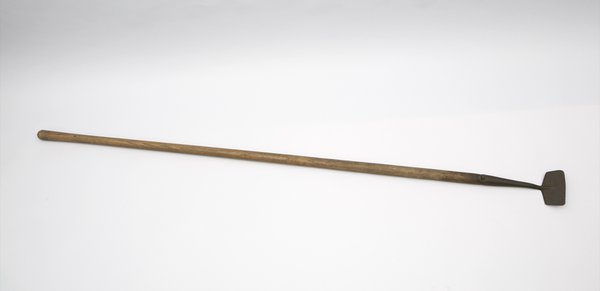Journey to the Cornfield art and objects
Make a leaf print by covering the vein-covered back of a leaf using a felt tip pen or paint, and gently press onto paper. Lift off slowly to reveal your fossil-like print. What do the veins feel like?


Fossil plant and fossil fish
A fossil is the remains or trace of a living animal or plant from long ago found preserved in earth or rock. Bring these fossils to life. To feel the rough outline of the leaf find some dried leaves and run your fingers over the veins and shape of the leaves. Fish can be slimy and scaly. To recreate the sensation of feeling a fish, try touching some vegetable oil on a piece of paper. To feel the scales, rub some rough fabric or the back side of a scrubbing sponge.
You are standing in the middle of this field, and you are about to paint a picture. What do you see, hear and smell? Create a landscape picture with you in it. Where are you and what are you doing?

Homewards by William Henry James Boot.
Bring this painting to life. Dress up in a long dress with an apron or tea towel tied around your waist or secured with a belt. Find a soft hat to put on your head and if you have a basket hook it in your arm or use any type of bag with a handle. Now you are ready to go outside and walk amongst the flowers, trees, and high grass. If you are allowed, touch and smell the different plants and flowers that you see. Be sure to find a tree and touch it's trunk to feel the bark in this painting. For indoor play, find something wooden and touch that to experience what a tree trunk might feel like. To recreate the sweet smell of the flowers, ask a grown-up if you can smell some perfume or cologne. To get the sensation of grass, run your hands over some carpeting or a soft toothbrush. Listen out your window for the sounds of nature to complete the experience.
Imagine you are a farmer. Make your own gardening tool from household items. Pretend to weed a garden. Have you found anything interesting in the ground as you dig it up?

19th Century Hoe.
This ancient Hoe is a farming tool used to loosen soil and chop weeds so crops, like corn fields, can grow big and strong. Bring this farm tool to life. Feel a wooden rolling pin or wood chopping board to experience the smoothness of the worn down wooden handle. Hold it in your hands to feel the weight. For the metal end, find a large spatula, spoon, or soup ladle and run your fingers over the edges and the inside to feel the shape.
Sensory play: Find a large flat stone and a round rock to pound and crush flowers, seeds, and spices. If you have a mortar and pestle you could use that instead. Does it smell nice?

Model of Whitburn windmill (one side of the windmill has been cut-away to reveal the inner workings). Whitburn windmill has a conical tower (constructed from stone), a timber cap, sails and a fantail.
Whitburn windmill was built in about 1796, after the earlier wooden windmill on the site blew down. Its tower was built of magnesian limestone from the nearby quarry. The mill ground corn from local farms until the late 19th century, when high winds were said to have critically damaged the mills at Whitburn, Cleadon and Boldon in a single night.
Bring this windmill to life. To feel the structure of the windmill find something made of stone, like a wall or pillar and run your hands over the surface. Does it feel warm or cold? Fort the timber cap, run your fingers over a wooden fence or table. Be careful if the wood is rough, please touch it gently. For the sails and fantail, the parts that spin, make a fan out of paper or use a real fan to feel the wind.



